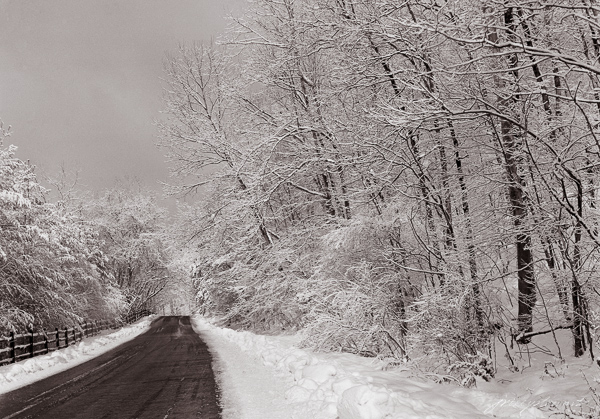I like photographing snow because snow can create settings that are absolutely beautiful and very photogenic. My favorite rendering of snow scenes is in black and white. I think the absence of cold colors lets the textural and tactile beauty of snow really shine through.
Texture in any fine art photograph is critical to our acceptance of the scene as something worthy of our interest and engagement. In wintry snow scenes, we need to see the texture before our brain really recognizes snow as snow instead of just white blobs. Once your brain recognizes snow as snow, it then encourages you to enter the scene and become a part of it, and then you can enjoy it!
It’s somewhat of a paradox, but to recognize snow as snow, it can’t be pure white. In fact, my favorite snow scenes have many shades of gray, from very light to very dark. Here’s a general tip: It’s the gray tones in a B&W photograph that make it beautiful; all you need is a very little bit of pure white to give a sense of light to the scene.
As an example of what I’m talking about, I offer “Along Lime Kiln Road in Winter.” I took this picture during 1/30 second just after our snow storm of December 2003. It was a beautifully calm snow fall, allowing the delicate white flakes to cling to the smallest branches of the barren trees. As they say, timing is everything: 15 minutes later the wind came up and caused the flakes to lose their grip and fall to the road, turning the page from the story I’d seen when I clicked the shutter. Does the snow look (and feel) like snow to you? How much pure white do you see?
At this time of year we see lots of snow scenes on Flickr, Facebook, and Pinterest. As they catch your eye and your emotions, ask yourself why that happened. Chances are, it’s because the snow actually looked like snow, full of texture and details that give it identity!
Stay warm!
Jim

